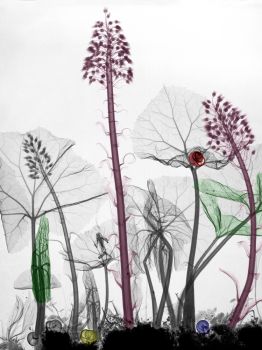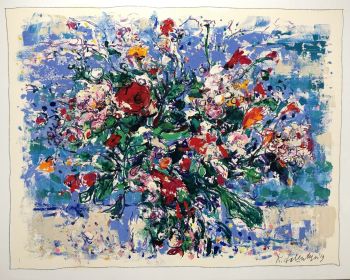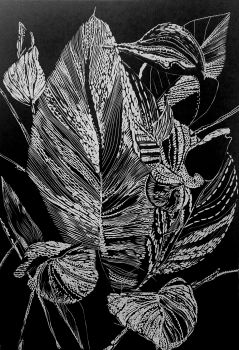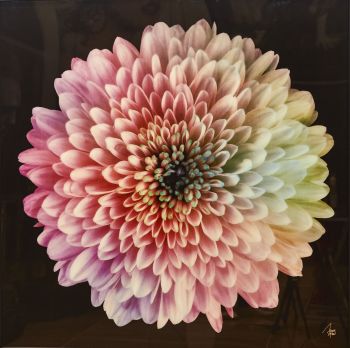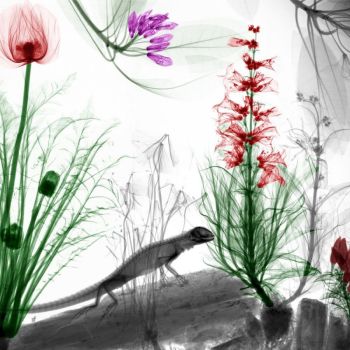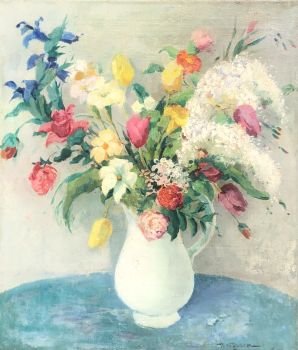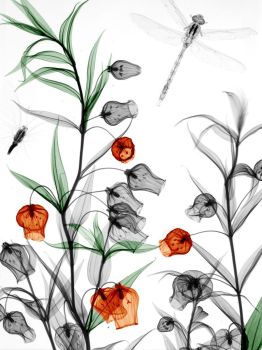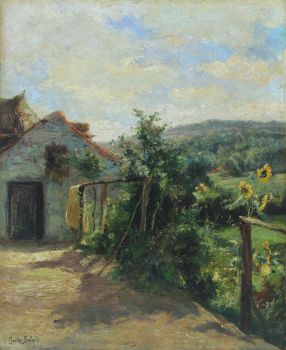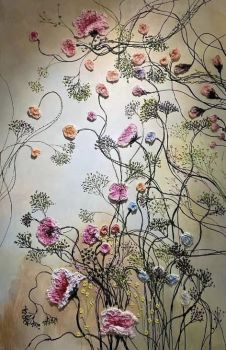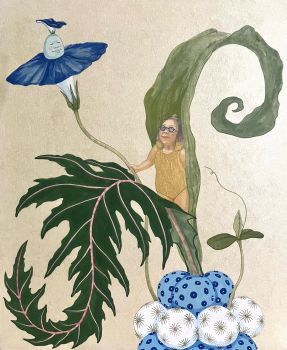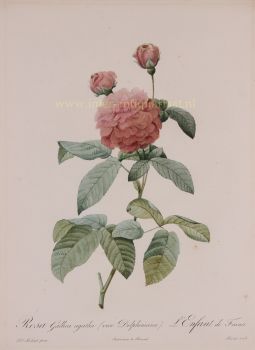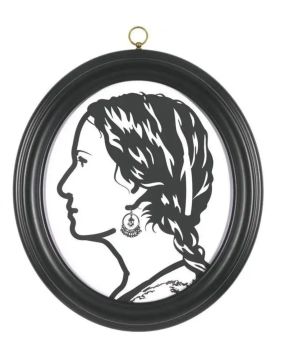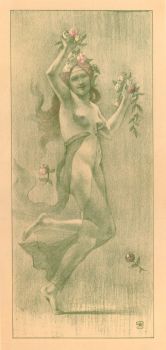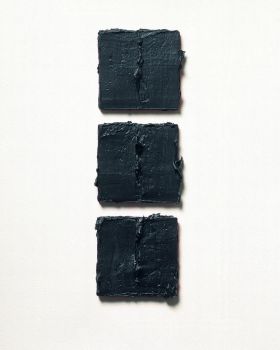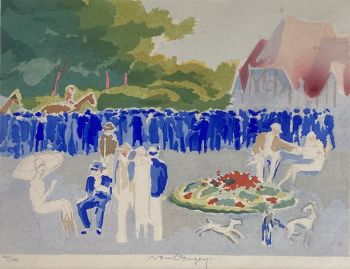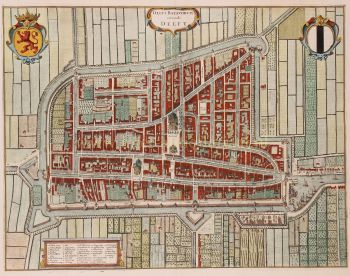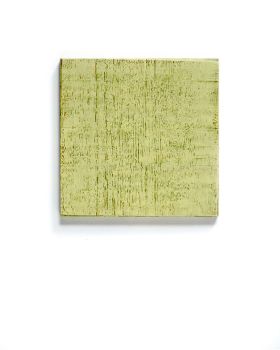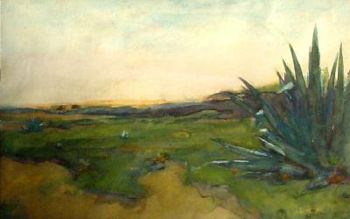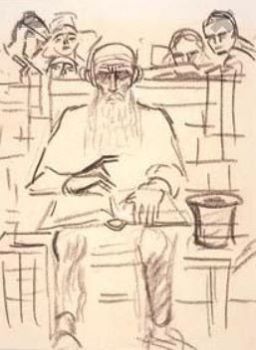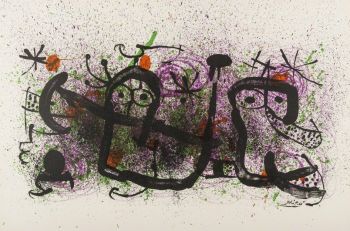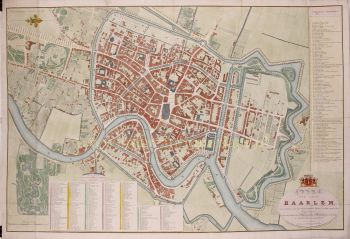Catalogue of plants of the Arabian Peninsula, with scientific names in Latin, Arabic and Persian 1919
Ethelbert Blatter
Paper
Currently unavailable via Gallerease
- About the artworkFlora Arabica. No. 1-5.
Calcutta (no. 5: Delhi), Superintendent government printing, 1919-1933. 5 parts (of 6). With folding map of the Arabian Peninsula (in no. 2). Later cloth, original wrappers of separate parts bound in.
First five parts of a description of the plants of the Arabian Peninsula; here with the preliminaries and original wrappers of each part, written by Ethelbert Blatter (1877-1934). The scientific plant names are given in Latin, Arabic, Persian as well as in regional dialects. The aim was to give a history of the botanical exploration of Arabia and a general sketch of the vegetation. A sixth part appeared posthumously.
Extract from the Records of the Botanical Survey of India (BSI), vol. VIII; the organisation established in 1890 for the purpose of identifying plant species India, and of establishing their economic value. Flora Arabica was a key work of reference on Arabian vegetation well into the 20th century.
With owner's inscription on flyleaves. A few marginal tears (some repaired), a couple leaves loosely inserted and some small stains on the first title-page. A good copy.
Stafleu & Cowan 556. - About the artistEthelbert Blatter (15 December 1877 – 26 May 1934) was a Swiss Jesuit priest and pioneering botanist in British India. Blatter was born in the canton of Appenzell Innerrhoden in Switzerland. Blatter went to high school in Schwyz and afterwards he moved to the border town of Feldkirch in Austria, joining the Jesuits. Blatter went to the Netherlands in 1898, studying classics and philosophy. He also developed interest in botany and attended scientific conferences in Europe. Blatter moved to India in 1903, where he was appointed Professor of Botany at St. Xavier’s College Bombay. He traveled extensively through India and wrote an important series of articles between 1904 and 1909, entitled The Palms of British India and Ceylon, Indigenous and Introduced. In 1909 Blatter came back to Europe, completing his theological studies in Hastings, South England. Ordained as a priest in 1912, Blatter lived a year in the Netherlands, before returning to London. When the Great War (1914-1919) broke out, Blatter moved from London to India, arriving in Bombay in October 1915. As professor of botany at St Xavier’s, Blatter built an extensive botanical collection. In 1925 Blatter retired and began to focus more on his botanical studies. He wrote amongst others Some Beautiful Indian Trees (1925), Beautiful Flowers of Kashmir (1927, 1928) and The Ferns of Bombay (1932). After a bad fall from a horse in 1930, his health began to fail. In 1932 Blatter received the first Johannes Bruehl Memorial Medal of the Asiatic Society of Bengal for “Conspicuous Important contributions to the knowledge of Asiatic Botany.” Blatter died on 26 May 1934 at St. Vincent’s High School, Pune
Artwork details
Category
Subject
Material & Technique
Related artworks
Hermann Nitsch
"UNDER MY SKIN" Signed book incl. small artwork and DVD in a matching box2010 - 2014
Price on requestGallerease Selected
LAWRENCE WEINER
"SKIMMING THE WATER [MENAGE A QUATRE]" Signed book plus small artwork2010 - 2014
Price on requestGallerease Selected
Yoko Ono
YOKO ONO: "ARISING" SIGNED BOOK PLUS SMALL ARTWORK 2010 - 2014
Price on requestGallerease Selected
Tilmanus Nicolaus Maastricht
Missale Romanum with Dutch silver mounts1788 - 1792
Price on requestJacob J. Roosjen SRI
Antonie Derkinderen
Memory book Exhibition of Dutch Painting1892
Price on requestKunsthandel Pygmalion
Engelbert Kaempfer
ENGELBERT KAEMPFER BOOK1651 - 1716
Price on requestZebregs & Röell - Fine Art - Antiques
1 - 4 / 22- 1 - 4 / 24
- 1 - 4 / 24

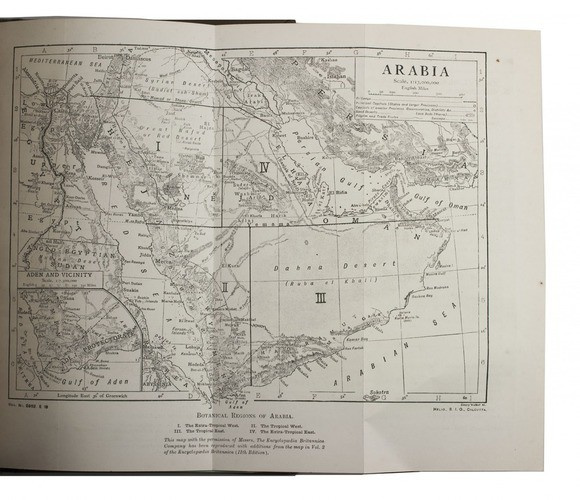










!["SKIMMING THE WATER [MENAGE A QUATRE]" Signed book plus small artwork by LAWRENCE WEINER](https://media-2.gallerease.com/images/442bfd5f-fc31-4e18-a2fa-ee0c08eade64/350x350/skimming-the-water-menage-a-quatre-signed-book-plus-small-artwork.jpg)
















